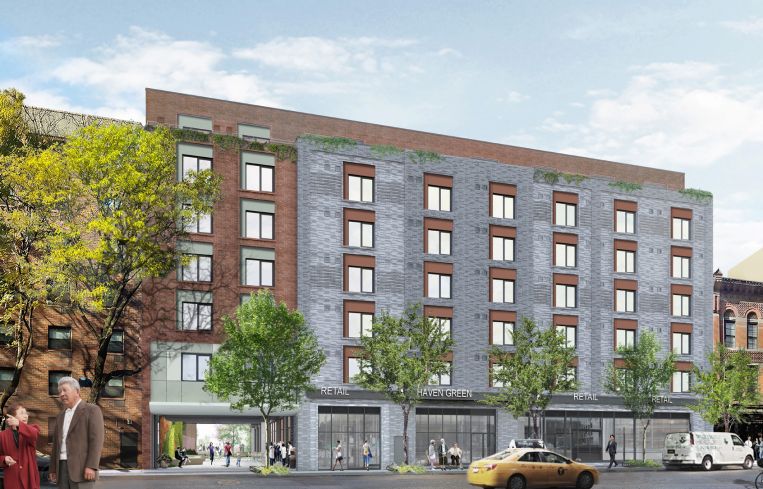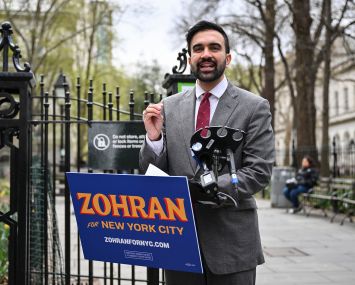Why New York’s Environmental Review Law for Projects Needs to Change Fast
By Jolie Milstein July 17, 2023 8:11 am
reprints
The last year has been dominated by talk of New York’s housing shortage. Most advocates, policymakers and New Yorkers themselves agree: New York City does not have enough housing, which is driving up rents across the five boroughs.
And, while Albany distressingly did not act this year, this consensus is a hard-fought win for advocates — and, optimistically, a sign that a supply solution may finally be around the corner.
Less discussed but equally crucial, however, is the labyrinthine bureaucracy that those who produce housing — especially affordable housing — must navigate just to break ground on their projects. The case of Haven Green in Downtown Manhattan is an illustrative example of how our housing process is broken. Specifically, the environmental review mandated for new housing developments by state law can delay projects with years of frivolous litigation.

New York is one of only six states that require environmental review for zoning changes. If New York is going to effectively combat the housing crisis, we will need to learn the lessons of Haven Green and work to prevent similar situations moving forward.
Let’s start with the context. Proposed originally in 2013, the project will create 123 deeply affordable units for seniors in one of the world’s most expensive neighborhoods on a small piece of city-owned land, with 37 of these units reserved for older New Yorkers with a history of homelessness.
SAGE will provide on-site services specific to elderly LGBTQ+ New Yorkers — many of whom served on the front lines of the struggle for equality — and the project will include a new headquarters for Habitat for Humanity New York City. Finally, it will create nearly 16,000 square feet of publicly accessible open space for gardening and recreation, a major upgrade over the current space.
If that sounds like a project designed to win the hearts and minds of New Yorkers often skeptical of new development, that’s because it is. And it worked: Haven Green has enjoyed the support of local council members, borough presidents, multiple City Halls, housing advocates, senior groups and nearly everyone in between.
This raises an obvious question: If opponents were few and far between, what took so long?
The answer, of course, is that New York allows just a few naysayers with weak arguments to hold up construction for nearly a decade through frivolous, onerous and ultimately useless legal challenges in the name of environmental review.
That is what happened at Haven Green. Opponents of the process claimed the project would destroy a local sculpture garden that, in truth, was rarely open to the public and will be dwarfed in size by the proposed new community green space. Few observers expected a lawsuit brought by a community group on these grounds to be successful — the city has never lost a comparable case in court — and its arguments were predictably weak.
Even the anti-housing NIMBYs themselves likely did not expect a legal victory in the end. But the process allowed them to halt development for nearly five years after the City Council overwhelmingly approved the project. The project, of course, underwent an extensive public review process that included an environmental assessment, and the building itself will be built to Passive House standards and is located in perhaps the most walkable neighborhood in the United States.
In the end, their goal was likely to delay, delay, and delay in the hope that the development team of Riseboro, Habitat for Humanity NYC and Pennrose would walk away to avoid the trouble and headache. That did not happen in this case, but this tactic can be successful.
In Sag Harbor, affordable developers had to abandon a project due to the prospect of indefinite litigation around environmental review. And in the Bronx’s Throggs Neck neighborhood, a development that would include 192 affordable units, including 99 for seniors and 25 for veterans, is currently delayed again due to litigation around environmental review.
In the case of Haven Green, this delay almost certainly means that many seniors who hoped to live at Haven Green when it was proposed in 2013 are no longer with us.
That is a tragedy and an outrage. But, unfortunately, state environmental review law encourages this reckless behavior. It is time for that to change. New Yorkers, who are being crushed under the weight of rising rent and few housing choices, deserve better than this.
Jolie Milstein is CEO and president of the New York State Association for Affordable Housing.


